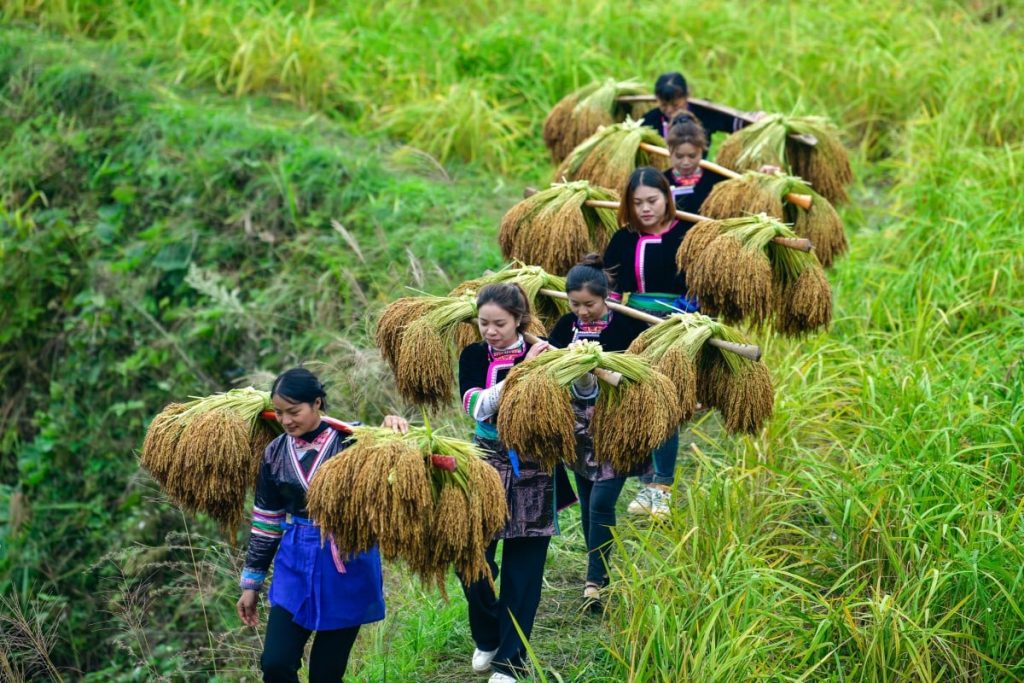Tags
Chinese team develops strain of rice that may help cut the risk of heart disease
Scientists gene-edited rice and wheat to produce coenzyme Q10, or CoQ10 – an antioxidant used to help treat heart condition symptoms

Victoria Bela.
Chinese scientists say they have created a new type of rice which produces a molecule that may help reduce the risk of heart disease.
Coenzyme Q10 – also known as CoQ10 or ubiquinone – is an antioxidant produced in the body that naturally decreases as we age and is used by cells in the process to create energy.
Lower levels of the coenzyme have been found in people with heart disease or those who take cholesterol-lowering drugs, and CoQ10 is often used as a supplement as research has shown it can improve symptoms of heart conditions.
CoQ10 is found naturally in foods like fish, meat and nuts, while staple crops like rice, wheat and oats predominantly produce another form of the coenzyme called CoQ9, which does not have the same benefits.
“Engineering CoQ10 production in crops would benefit human health,” researchers from the Chinese Academy of Sciences (CAS) said in a paper published in the peer-reviewed journal Cell on February 13.
To achieve this, the researchers first studied 134 plant samples from 67 plant families to determine genetic variations in those that produce more CoQ9. Using this information, they successfully gene-edited rice and wheat that predominantly produces CoQ10.
“The CoQ10 content in edited rice or wheat is similar to that in other plant-based foods that naturally contain CoQ10 (such as tomatoes), and lower than meat and fish,” said co-first author Xu Jingjing, a researcher at the CAS Centre for Excellence in Molecular Plant Sciences (CEMPS).
“In the future, attempts will be made to further increase the CoQ10 content by editing other key genes,” Xu said.
The team led by plant expert Caixia Gao at the CAS Institute of Genetics and Developmental Biology and plant physiologist Chen Xiaoya at the CEMPS said their process could also potentially be applied to editing other cereals and vegetables.
Rice, wheat and maize provide more than 50 per cent of the world’s calories, yet do not contribute to our daily intake of CoQ10.
Humans eat around 3 to 6 milligrams (3,000 to 6,000 micrograms) of CoQ10 a day, although our daily needs may be closer to 500mg, researchers from the Centre Hospitalier Universitaire de Sherbrooke in Canada wrote in a paper published in the Journal of Nutritional Science in 2022.
After studying plant samples, the Chinese team found that CoQ10 is an ancestral trait in flowering plants and is still the dominant form in many species including most magnoliids – a group of more than 10,000 species including avocado and cinnamon.
At some point, the ancestors of staple crops and other plants like cucumber, watermelon and pumpkins independently evolved to predominantly produce CoQ9.
The researchers determined amino acid sites within the DNA sequences of the plants that produced more CoQ10 or CoQ9 that differed, and editing five amino acid sites produced rice biofortified with CoQ10.
Xu said the team used prime editing, a precise type of gene editing that modifies target genes without introducing any foreign genes. The researchers confirmed their mutants were not transgenic, and that no off-target edits had been made – which could cause unintended mutations.
The biofortified rice had a proportion of 75 per cent CoQ10 in its leaves and grain, which amounted to 5 micrograms of CoQ10 per gram of rice grain, according to the CAS.
“Synthesis of CoQ10 instead of CoQ9 had no discernible impact on the grain yield of the Q10 rice plants,” the team said.
Xu said that while the team was mainly engaged in basic research, they “may cooperate with institutions or companies with relevant experience to promote CoQ10 rice in the future”.
As bread wheat also provides about 20 per cent of all calories consumed by humans, the researchers also edited biofortified CoQ10 wheat.
“A similar strategy could be applied to enable CoQ10 production in other cereals and vegetables that mainly accumulate CoQ9, including maize, spinach, lettuce, sunflower, melons and more,” the team said.
https://www.scmp.com/news/china/science/article/3299567/chinese-team-develops-strain-rice-may-help-cut-risk-heart-disease?module=perpetual_scroll_0&pgtype=articlePublished Date: February 21, 2025






